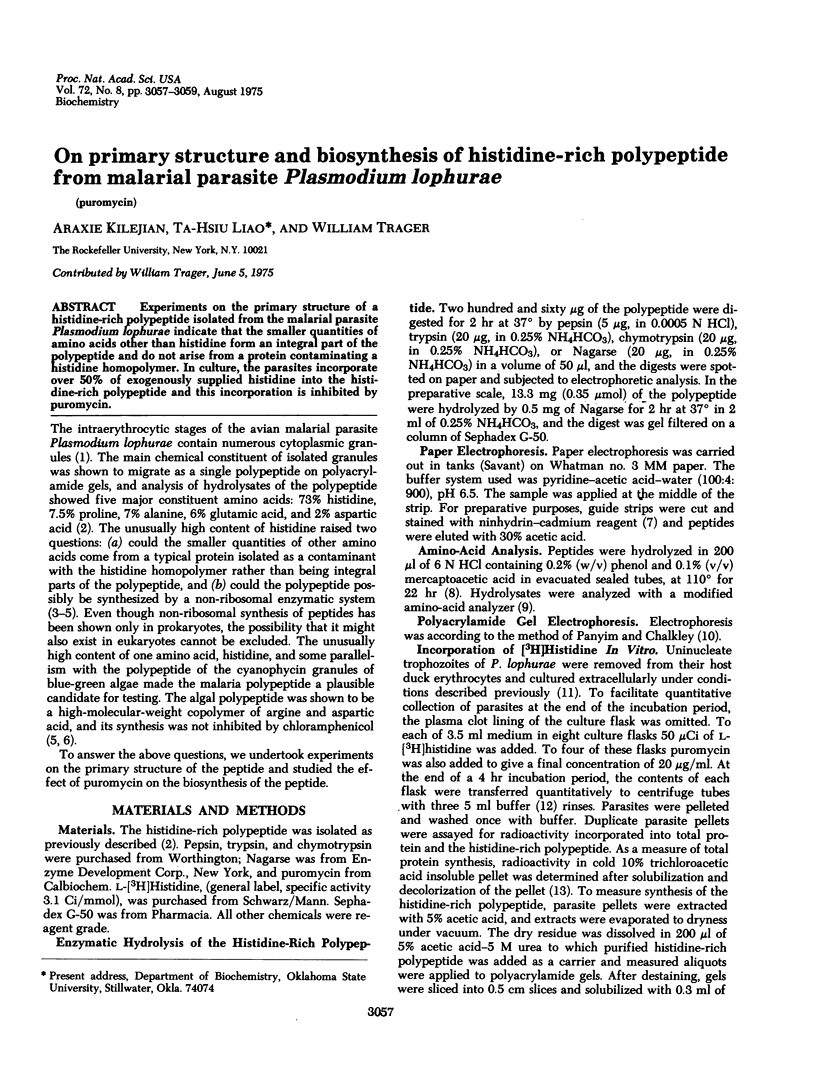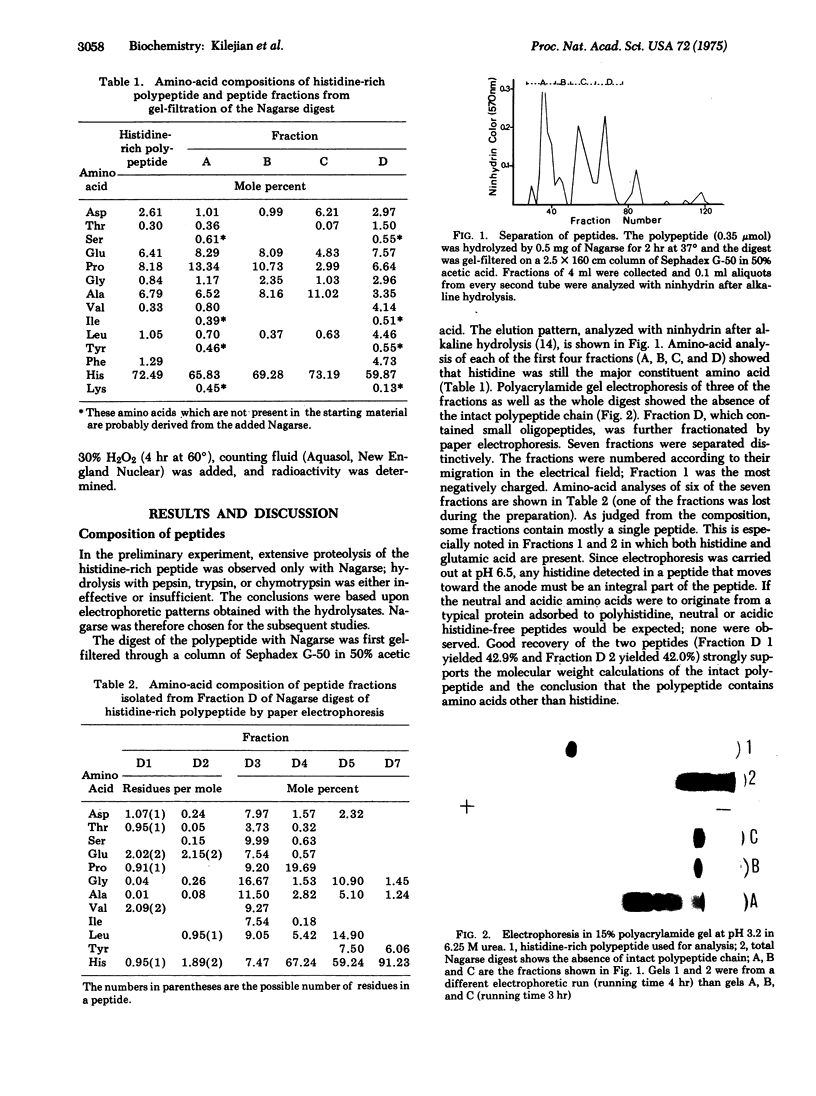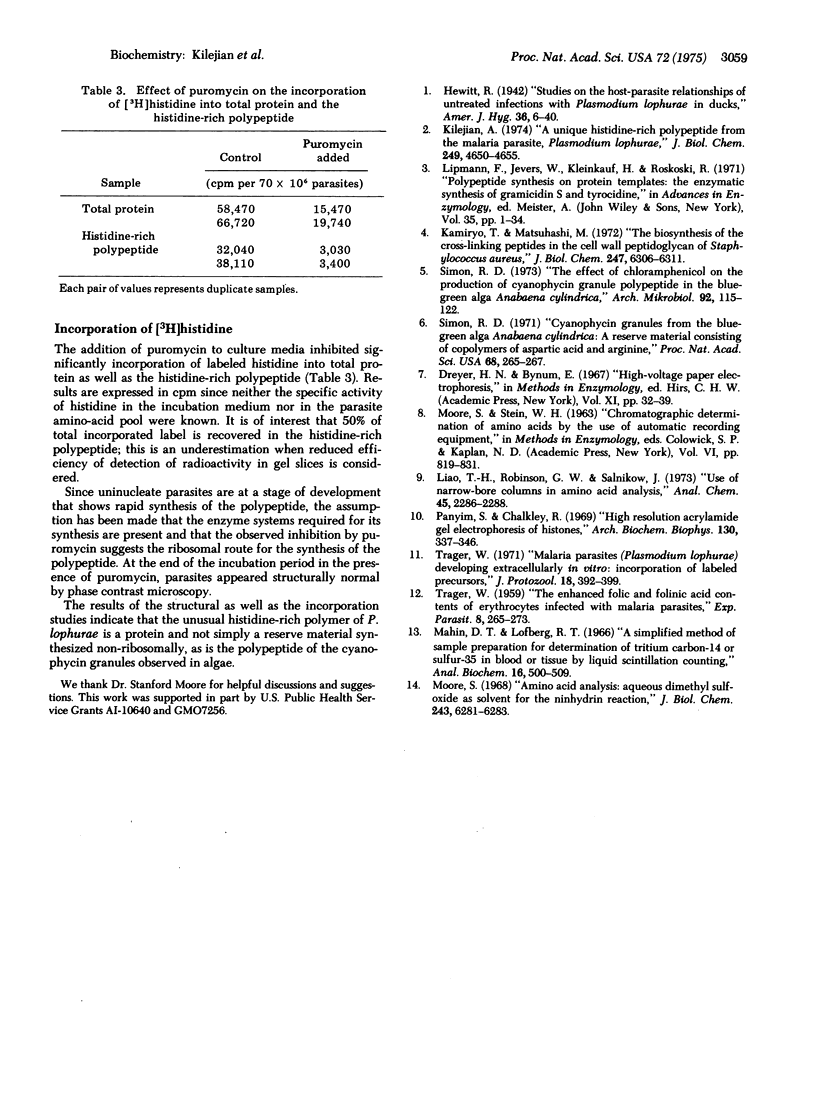Abstract
Experiments on the primary structure of a histidine-rich polypeptide isolated from the malarial parasite Plasmodium lophurae indicate that the smaller quantities of amino acids other than histidine form an integral part of the polypeptide and do not arise from a protein contaminating a histidine homopolymer. In culture, the parasites incorporate over 50% of exogenously supplied histidine into the histidine-rich polypeptide and this incorporation is inhibited by puromycin.
Full text
PDF


Images in this article
Selected References
These references are in PubMed. This may not be the complete list of references from this article.
- Kamiryo T., Matsuhashi M. The biosynthesis of the cross-linking peptides in the cell wall peptidoglycan of Staphylococcus aureus. J Biol Chem. 1972 Oct 10;247(19):6306–6311. [PubMed] [Google Scholar]
- Kilejian A. A unique histidine-rich polypeptide from the malaria parasite, Plasmodium lophurae. J Biol Chem. 1974 Jul 25;249(14):4650–4655. [PubMed] [Google Scholar]
- Lipmann F., Gevers W., Kleinkauf H., Roskoski R., Jr Polypeptide synthesis on protein templates: the enzymatic synthesis of gramicidin S and tyrocidine. Adv Enzymol Relat Areas Mol Biol. 1971;35:1–34. doi: 10.1002/9780470122808.ch1. [DOI] [PubMed] [Google Scholar]
- Moore S. Amino acid analysis: aqueous dimethyl sulfoxide as solvent for the ninhydrin reaction. J Biol Chem. 1968 Dec 10;243(23):6281–6283. [PubMed] [Google Scholar]
- Panyim S., Chalkley R. High resolution acrylamide gel electrophoresis of histones. Arch Biochem Biophys. 1969 Mar;130(1):337–346. doi: 10.1016/0003-9861(69)90042-3. [DOI] [PubMed] [Google Scholar]
- Simon R. D. Cyanophycin Granules from the Blue-Green Alga Anabaena cylindrica: A Reserve Material Consisting of Copolymers of Aspartic Acid and Arginine. Proc Natl Acad Sci U S A. 1971 Feb;68(2):265–267. doi: 10.1073/pnas.68.2.265. [DOI] [PMC free article] [PubMed] [Google Scholar]
- Simon R. D. The effect of chloramphenicol on the production of cyanophycin granule polypeptide in the blue green alga Anabaena cylindrica. Arch Mikrobiol. 1973;92(2):115–122. doi: 10.1007/BF00425009. [DOI] [PubMed] [Google Scholar]
- TRAGER W. The enhanced folic and folinic acid contents of erythrocytes infected with malaria parasites. Exp Parasitol. 1959 Jun;8(3):265–273. doi: 10.1016/0014-4894(59)90025-6. [DOI] [PubMed] [Google Scholar]
- Trager W. Malaria parasites (Plasmodium lophurae) developing extracellularly in vitro: incorporation of labeled precursors. J Protozool. 1971 Aug;18(3):392–399. doi: 10.1111/j.1550-7408.1971.tb03341.x. [DOI] [PubMed] [Google Scholar]



